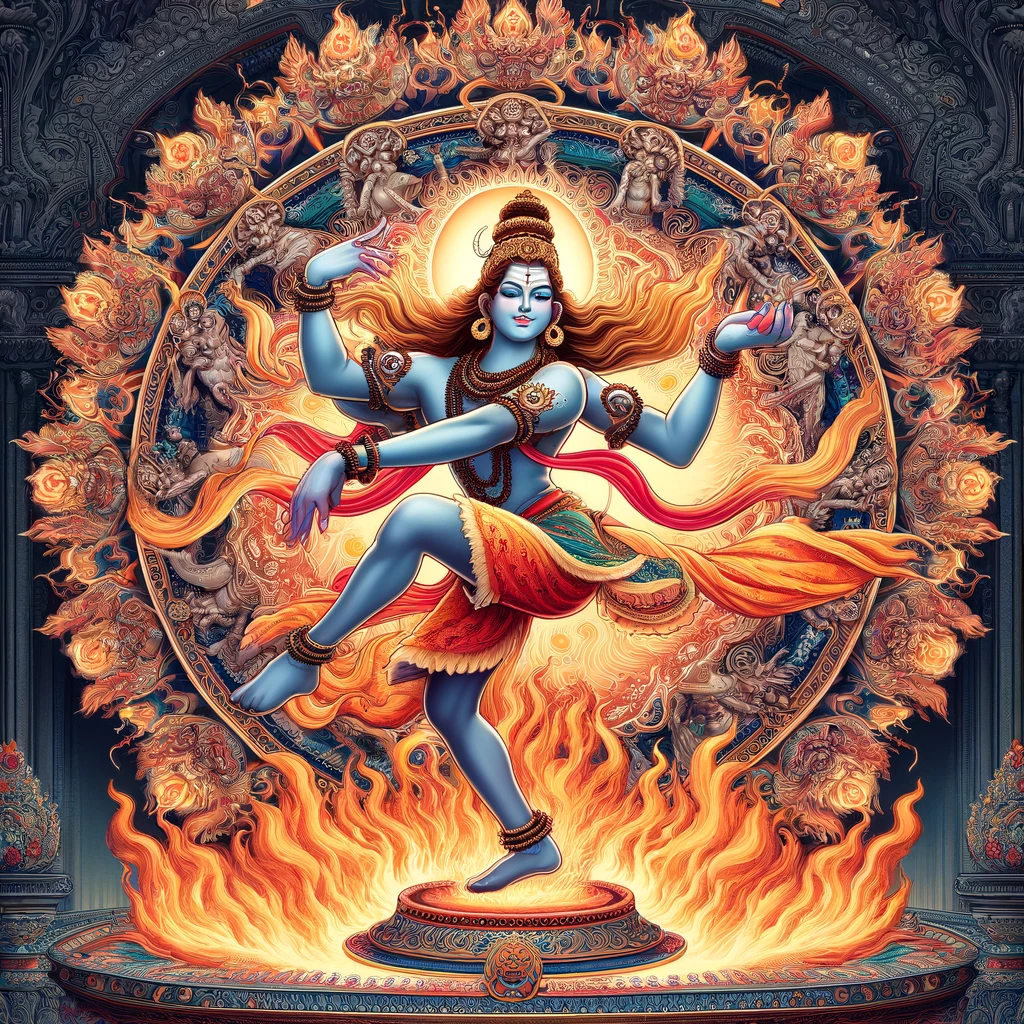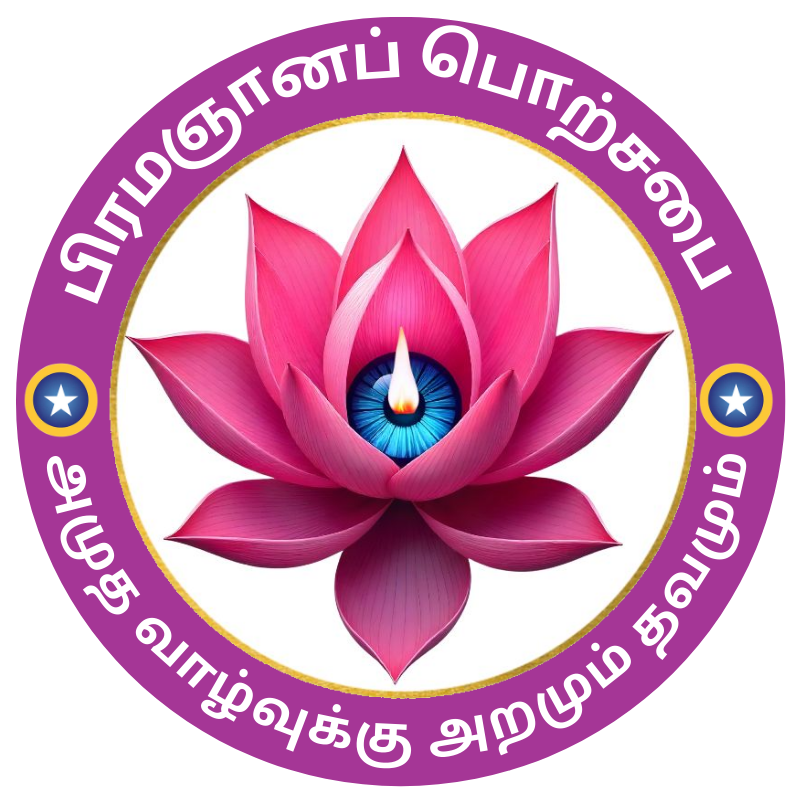
Thirumandiram for Removing the Fear of Yama

Thirumandiram for Removing the Fear of Yama
First greetings to our nectar-like Tamil mother. I convey complete respects to all Tamil scholars and human beings, and with the blessings of our Sadguru, I am taking another pearl from the ocean of Thirumandiram nectar for all of you. Let’s dive into the next pot of nectar.
When the central channel rises to the peak,
The four entrances in the middle,
Seeing the upper entrance open outside,
The words of Yama will not appear even in dreams. (Thirumandiram – 622)
The first word of this Thirumandiram is “central channel.” Scholars, sages, and religious poets interpret the central channel as the one located at the root chakra (Muladhara), which is said to be situated at the base of the spine with four petals. The root or the basis for everything is called “Moolam.” Since God exists as the basis for all beings, He is called the “Adimoolam” (primordial root).
Here, what Moolan refers to as the central channel is not the one running between the Ida and Pingala channels, as claimed by religious practitioners. The central channel refers to the Sushumna Nadi, which exists at the central point of the divine foot. Observe the apex of the true essence; there, a circular whirlpool (suzhi) will be seen. Therefore, the phrase “central channel rises to the peak” means the Sushumna Nadi located at the central point of the divine foot.
The next line of the Thirumandiram is “the four entrances in the middle.” Scholars, poets, and religious commentators interpret the four entrances as the eyes, ears, nose, and mouth. However, in Brama Gnana penance, these are not the four entrances. Let’s delve into the true essence, setting aside these interpretations.

The four entrances are:
1. Sushumna entrance
2. Vajra entrance
3. Chitrini entrance
4. Brama entrance
1. The outer red circle – Sushumna Nadi entrance
2. The green circle – Vajra Nadi entrance
3. The yellow circle – Chitrini Nadi entrance
4. The white circle – Brama Nadi entrance
These four Nadis are interconnected and function as wisdom entrances. The Sushumna Nadi entrance is wide to inhale the nectar air coming in the early morning.
The second entrance is the Vajra Nadi entrance, which is half the size of the Sushumna entrance. This entrance solidifies and filters the nectar air, filled with the brilliance of the sun and the quality of Rajas. The Vajra Nadi entrance helps absorb high electromagnetic energies and is located inward within the Sushumna Nadi.
The third entrance is the Chitrini Nadi entrance, associated with the Sattva quality and white in color. This entrance grants wisdom and knowledge to the seeker. As the nectar air enters through this entrance, it bends and moves toward the Brama Nadi, like a white serpent. The Chitrini Nadi entrance is where the ten types of sounds (Nada) originate. Thirumoolar mentions these sounds in another verse:
The sound of the bell, the ocean roar, the elephant’s trumpet,
The flute’s music, the thunder’s roar,
The sound of the ornament, the bee’s hum,
The conch’s blow, the harp’s music,
The ten sounds emerge distinctly. (Thirumandiram – 586)
1. The sound of the bell
2. The ocean’s roar
3. The elephant’s trumpet
4. The flute’s music
5. The thunder’s roar
6. The sound of the ornament
7. The bee’s hum
8. The sound of the dragonfly
9. The conch’s blow
10. The harp’s music
These ten sounds are heard in the Chudarazhi penance, and only those who closely observe their inner self can hear them.
After hearing these ten sounds, the nectar air begins to enter the fourth entrance, the Brama entrance. At this point, we are at the central point of the four entrances. Therefore, Thirumoolar mentions in Brama Gnana penance that the nectar air enters the Brama entrance as “the four entrances in the middle.”
The third line of the verse is “Seeing the upper entrance open outside.” The fourth entrance is known as the upper entrance. This entrance is referred to as the celestial entrance and is traditionally opened during the month of Margazhi. Why only during Margazhi? Because during Margazhi, the high electromagnetic nectar air descends from the solar system to the earth’s surface. We must all inhale, absorb, and consume this nectar air.
During the early morning of Margazhi, people clean their doorsteps with cow dung, draw kolams (rangoli) with rice flour, and place a pumpkin flower on a cow dung heap in the center of the kolam. This practice is a scientific wisdom tradition to ensure every human receives Brama Gnana. Without understanding this, people in villages continue the tradition of cleaning doorsteps with cow dung and drawing kolams during Margazhi.
Cow dung is a natural disinfectant, purifying the surrounding air. When the air is purified, the nectar air descending to earth remains pure and uncontaminated. Moreover, cow dung retains the nectar air for a long time. Since both cow dung and nectar air are cool, they merge into each other.
From 3:00 AM, the nectar air starts filling the entire earth. That is why men, during Margazhi, roam the streets singing Thiruppavai and Thiruvempavai without wearing shirts to fully absorb the nectar air. Our ancestors were great sages who devised this practice. Women gather to sing Thiruppavai and various ragas during Margazhi, celebrating and dancing joyfully. The nectar air that descends from the solar system during Margazhi is vital for sustaining life, which few people are aware of today.
Only when both doors (eyes) are opened can one pass through the entrance. Only when our two eye doors are opened can we enter the celestial entrance. Beyond the eye doors are the Vajra Nadi, Chitrini Nadi, and Brama Nadi entrances. Without opening your doors, how can air enter? Open the door, let the air in; open the eyes, let the nectar flow.
Without the nectar flowing, life cannot sustain in the body. The nectar must flow, which is why, during Margazhi, we must fill our body with nectar air so that it overflows in the month of Thai. This overflow of nectar in Thai is celebrated as Pongal to the Sun. The nectar air comes from the solar system. Now you understand the Brama Gnana taught by the primordial Tamil Siddhas.


The upper entrance is also referred to as the entrance above the eyebrows, called the Brahmarandhra entrance. Through this entrance, the sweet-tasting nectar descends. However, the upper entrance is not the Brahmarandhra entrance but the Parabrahma entrance, which is the supreme entrance.
Entering the Parabrahma entrance, if we find our life force and life light, then “the words of Yama will not appear even in dreams.” Yama will not come even in our dreams. This is the undying great life, the deathless education taught by the primordial Tamil Siddhas.



